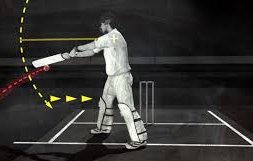
 |
| Index | |
|
|
|
|
|
| Wide  If the concept of a Wide ball had not been invented there would be nothing to discourage bowlers from bowling deliveries that were so far away from the striker as to be, effectively, unhittable The result of that would be a very boring game indeed. Consequently, a Wide is defined as a delivery that is not a No ball and is not sufficiently within the striker's reach to be hit by what the Laws term a normal cricket stroke. It follows that such a ball must not touch the bat or the person of the striker The umpire has to determine not only whether the ball passed wide of where the striker was actually standing but whether it would also have passed wide had the striker been standing in a normal guard position. If the umpire is satisfied about both of those conditions he will call and signal Wide ball If the striker moves towards the ball, so as to bring it within range of a normal stroke, it should not be called as a Wide. Nor is the striker permitted to create a Wide - by moving away from the delivery so as to put it out of range Strangely, the height of the ball is also relevant. For example, a long-hop, passing 2½ feet wide of off stump is easier to hit than a yorker that is similarly wide. Another effect of the height is that some competitions (commonly those in higher levels of cricket) decree in their playing conditions that the ball that pitches and then passes over head height of the striker should be a Wide. The MCC Laws of Cricket state that such a delivery is a No ball The penalty for bowling a Wide is one run added to the batting side's score. This penalty run is always added to the score whether or not other runs or penalties are scored or disallowed. The ball does not become dead just because a Wide has been called, so further runs taken from that Wide are possible and add to the one-run penalty. None of them count towards the striker's individual score - they are credited to the extras in the batting side's total. Wides are also debited against the bowler's bowling analysis Batters are not free from being dismissed off a Wide. The striker can be Stumped or be given out Hit wicket and either batsman can be out Obstructing the field or Run out A Wide does not count as one of the over |
||||||